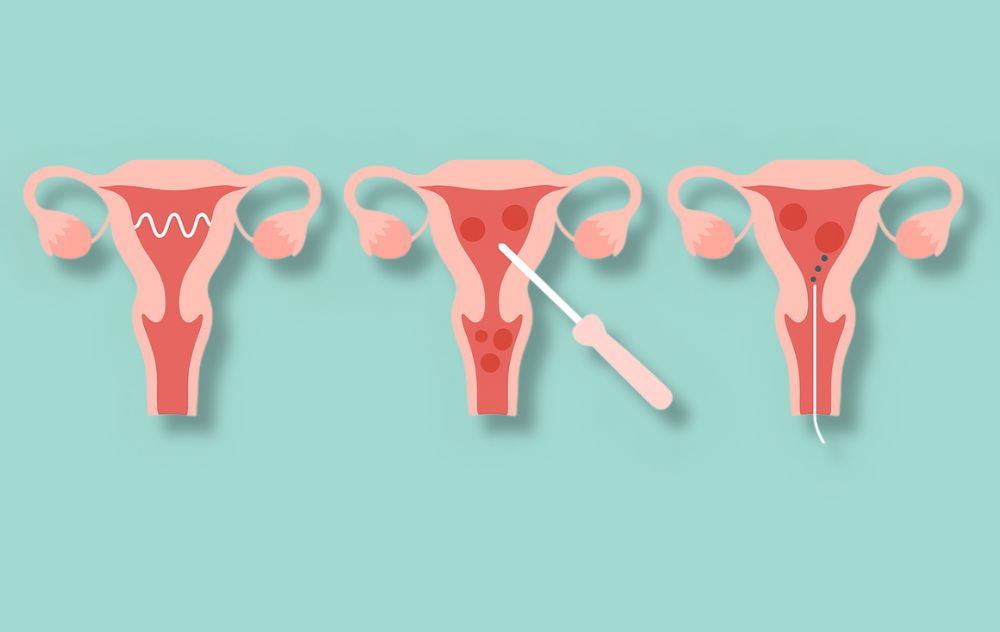
Let’s address the main question – is endometrial ablation the same as uterine fibroid ablation? The answer is no and understanding the difference can help you make the most informed choice about your reproductive health.
Many women searching for solutions come across terms like endometrial ablation and uterine fibroid ablation. While these procedures sound alike, they are not the same. Adding to the mix is another highly effective alternative, Uterine Fibroid Embolization (UFE) also called Uterine Artery Embolization, which directly targets fibroids with remarkable results.
What Is Endometrial Ablation?
Endometrial ablation is a minimally invasive procedure that targets the lining of the uterus (the endometrium). Using heat, cold, microwave energy, or radiofrequency, the endometrial lining is destroyed to reduce or stop menstrual bleeding.
It’s primarily used for women with:
-
Heavy menstrual bleeding
-
No plans for future pregnancy
-
Small or no fibroids
However, endometrial ablation does not treat fibroids themselves. It simply removes the tissue that sheds during menstruation, which may help with bleeding caused by fibroids if they are very small or submucosal—but it won’t shrink or eliminate the fibroids.
What Is Uterine Fibroid Ablation?
Uterine fibroid ablation, sometimes referred to as radiofrequency ablation (RFA) of fibroids or laparoscopic radiofrequency fibroid ablation (also called Acessa™), is a targeted treatment specifically designed to shrink fibroids.
This procedure uses imaging to locate fibroids and delivers radiofrequency energy directly to them, causing thermal destruction and shrinkage over time. Unlike endometrial ablation, fibroid ablation targets the fibroids themselves, not the uterine lining.
It’s best suited for women who:
-
Want to preserve the uterus
-
Are experiencing fibroid-related symptoms like pressure, pain, or irregular bleeding
-
Have fibroids that aren’t easily removed surgically
Key Differences Between Endometrial Ablation and Uterine Fibroid Ablation
| Feature | Endometrial Ablation | Uterine Fibroid Ablation (RFA) |
|---|---|---|
| Targets | Uterine lining (endometrium) | Fibroid tumors |
| Purpose | Reduce or stop menstrual bleeding | Shrink fibroids and relieve pressure symptoms |
| Treats fibroids directly | No | Yes |
| Effectiveness for fibroids | Minimal or indirect | High |
| Uterus-preserving | Yes | Yes |
| Suitable for future pregnancy | No | Possibly, with doctor supervision |
| Recovery time | 1–3 days | 4–10 days |
What About Uterine Fibroid Embolization (UFE)?
Uterine Fibroid Embolization is another non-surgical procedure that shrinks fibroids by cutting off their blood supply. An interventional radiologist inserts a tiny catheter through the groin or wrist and releases embolic agents that block blood flow to the fibroids, causing them to shrink and die over time. When comparing UFE vs. Ablation techniques, let’s see how UFE stacks up below.
UFE is:
-
Suitable for multiple and large fibroids
-
Performed on an outpatient basis
-
Uterus-sparing
-
Effective at treating bulk symptoms like pain and pressure
-
An alternative to hysterectomy
Because it treats all fibroids at once, regardless of size or number, UFE is often the most comprehensive non-surgical option available.
Endometrial Ablation vs Uterine Fibroid Ablation vs UFE: What’s the Difference?
Here’s a breakdown to help you visualize the key differences:
| Treatment | Targets Fibroids Directly | Reduces Heavy Bleeding | Shrinks Fibroids | Preserves Uterus | Good for Large/Multiple Fibroids |
|---|---|---|---|---|---|
| Endometrial Ablation | No | Yes | No | Yes | No |
| Uterine Fibroid Ablation (RFA) | Yes | Sometimes | Yes | Yes | Sometimes |
| Uterine Fibroid Embolization (UFE) | Yes | Yes | Yes | Yes | Yes |
Understand the Goal Before Choosing the Fibroid Procedure
So, is endometrial ablation the same as uterine fibroid ablation? Absolutely not. While both sound similar and are minimally invasive, they serve very different purposes. One treats the uterine lining to stop bleeding, and the other treats the fibroids themselves.
When deciding between ablation techniques or UFE, it’s important to work with a fibroid specialist who can assess your unique condition and help you choose the safest, most effective solution—whether your goal is to reduce bleeding, preserve fertility, avoid surgery, or eliminate fibroid symptoms altogether.


